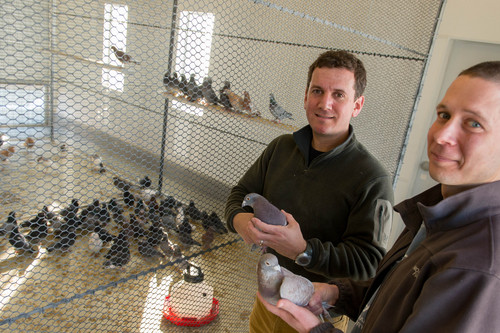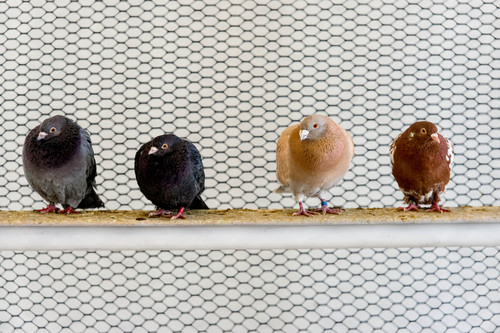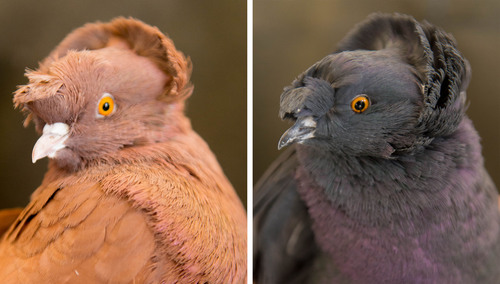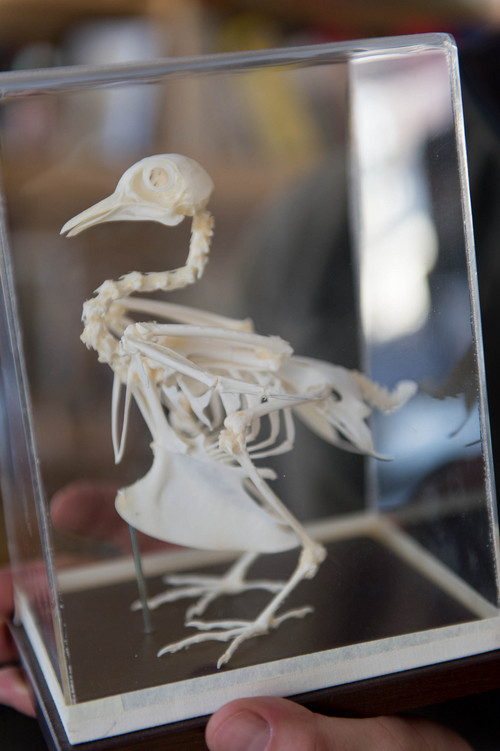This is an archived article that was published on sltrib.com in 2014, and information in the article may be outdated. It is provided only for personal research purposes and may not be reprinted.
If the word pigeon conjures up images of squat, dull-colored birds of questionable cleanliness, Michael Shapiro has a couple of birds he'd like you to meet.
There are puffy, almost Kewpie Doll-like pigeons with tiny beaks; tall, full-throated pigeons with proud postures; and puffy English trumpeters with feathers curling around their heads and sticking out several inches from their feet.
The variety of the approximately 350 pigeon breeds makes them perfect for studying genetics.
"A lot of what we did really stands on the shoulders of thousands of years of pigeon breeding," said Shapiro, an associate professor of biology at the University of Utah and senior author of a pigeon genetics study published online Thursday in the journal Current Biology.
It identifies three key genes that determine feather color in domestic rock pigeons, and the results go beyond birds.
"These are the exact same genes that contribute to certain diseases in humans," he said.
Mutations on the three genes can cause albinism and melanoma, as well as make cells are more susceptible to UV damage due to lower levels of protective pigment, according to Eric Domyan, a postdoctoral fellow in biology and first author of the study.
In pigeons, color is created by two types of melanin pigment. Eumelanin makes black and brown while pheomelanin creates red and yellow feathers.
By studying the pigeon genome, Shapiro and his colleagues found three genes that control how those pigments are distributed and expressed. Tyrp1 is the primary gene that controls color, and the normal version makes birds blue-black, but a mutation can produce ash red or brown. Sox10 is a recessive gene, but a pair with a mutation override Tyrp1 and make the bird red.
The third, Slc45a2, controls the shade, and a mutation produces a washed-out version of the color, making a red appear yellow.
Though there's more to pigeon coloration — the genetics of color patterns, for example, have yet to be discovered — those three genes go a long way toward explaining the variation in the 82 species of rock pigeons, and add to our understanding of pigment in expression in humans and other animals.
"Color traits in pigeons and humans are not under simple gene control; it's contributions from multiple genes that generate color phenotypes or traits," Shapiro said. "The same is true of diseases like cancer. Typically, there's not a single cause or mutation, it's interactions among different genes. So understanding the interactions is critical to understanding the disease."
The study was completed with several co-authors from the U. as well as the University of Texas at Arlington and the University of Cincinnati College of Medicine.
It was funded by the National Science Foundation, Burroughs Wellcome Fund, National Institutes of Health, Huntsman Cancer Foundation and the Tom C. Mathews Jr. Familial Melanoma Research Clinic Endowment.
Twitter: @lwhitehurst





















